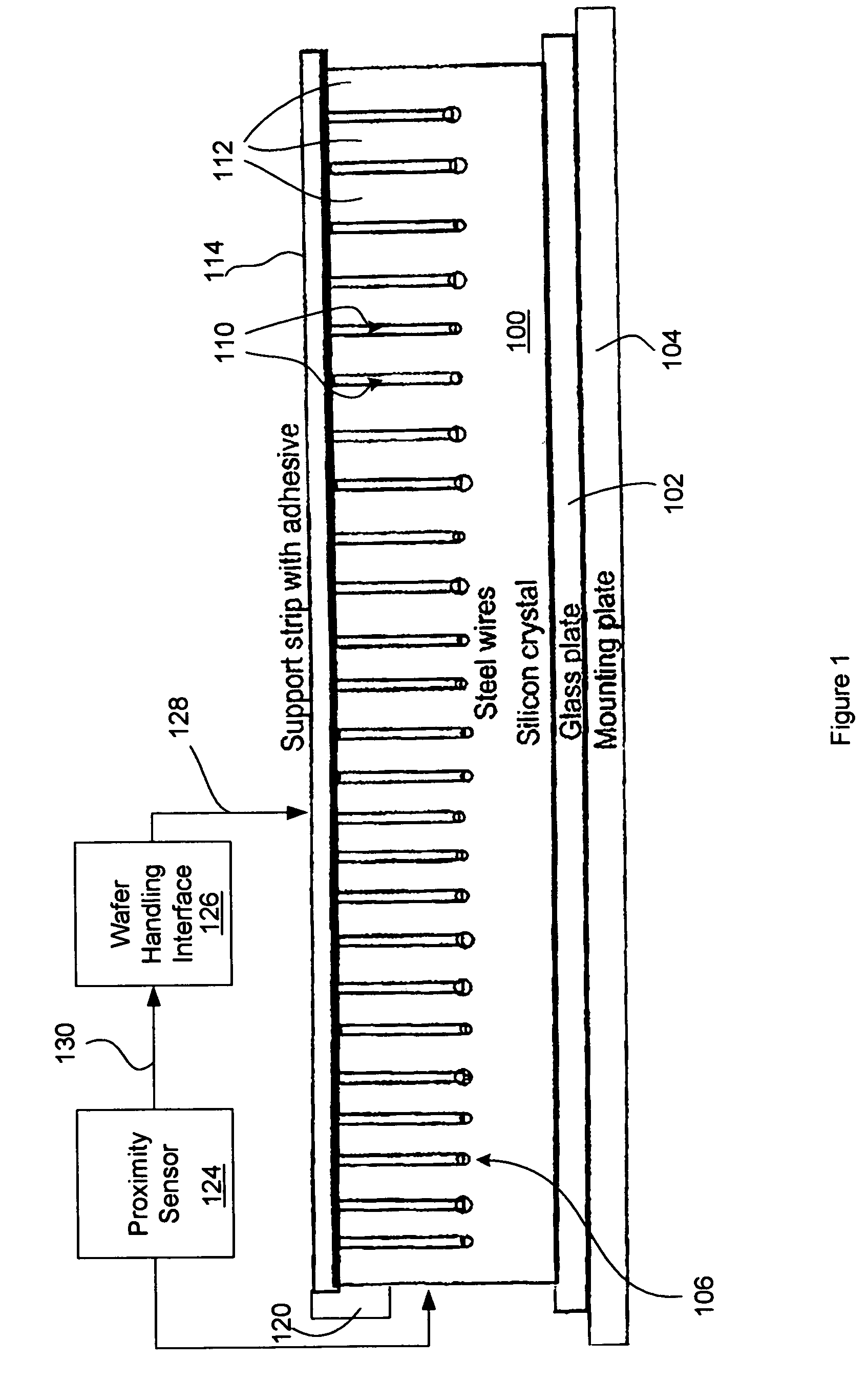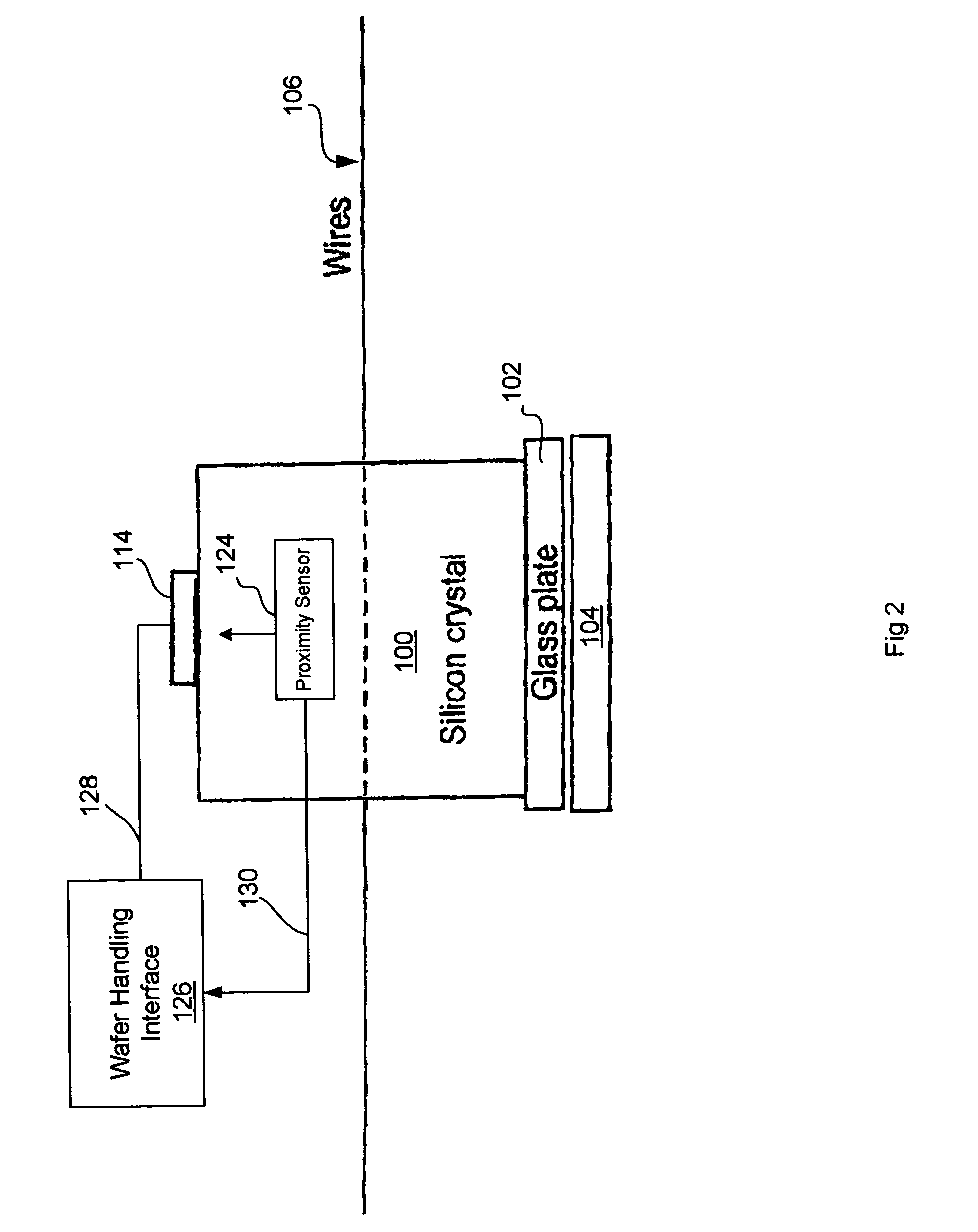Method and apparatus for cutting ultra thin silicon wafers
a technology of silicon wafers and cutting methods, applied in metal sawing apparatus, metal sawing devices, manufacturing tools, etc., can solve the problems of undetectable high wire speed, damage and cracks in the wires, and more fragile diamond saw wires, so as to reduce the variation of total thickness, improve control and stabilization, and thin the effect of thin wafers
- Summary
- Abstract
- Description
- Claims
- Application Information
AI Technical Summary
Benefits of technology
Problems solved by technology
Method used
Image
Examples
Embodiment Construction
[0029]Referring to FIGS. 1, 2 and 3, an ingot or block of silicon 100 is provided on a glass plate or cutting beam 102. The cutting beam 102 also can be graphite epoxy or similar material, which in turn is positioned on a conventional mounting plate 104 for holding the block of silicon during the wire sawing process. The mounting plate slides into a fixture in the wire saw (not shown for clarity). The wire 106 is looped over the wire guide 108 (FIG. 3) to form a wire web comprising the plurality of cutting surfaces, each wire 106 providing a corresponding cut or section 110 through the silicon block 100. When cut all the way through to the cutting beam 102, the sections 110 define a plurality of ultra thin silicon wafers 112.
[0030]A conventional high-speed wire saw process for cutting a silicon ingot typically adheres free abrasive grains from a slurry and is operated a wire speed of 7–20 meters per second. In a preferred embodiment, a composition cutting solution comprising a high ...
PUM
| Property | Measurement | Unit |
|---|---|---|
| thickness | aaaaa | aaaaa |
| thicknesses | aaaaa | aaaaa |
| speed | aaaaa | aaaaa |
Abstract
Description
Claims
Application Information
 Login to View More
Login to View More - R&D
- Intellectual Property
- Life Sciences
- Materials
- Tech Scout
- Unparalleled Data Quality
- Higher Quality Content
- 60% Fewer Hallucinations
Browse by: Latest US Patents, China's latest patents, Technical Efficacy Thesaurus, Application Domain, Technology Topic, Popular Technical Reports.
© 2025 PatSnap. All rights reserved.Legal|Privacy policy|Modern Slavery Act Transparency Statement|Sitemap|About US| Contact US: help@patsnap.com



